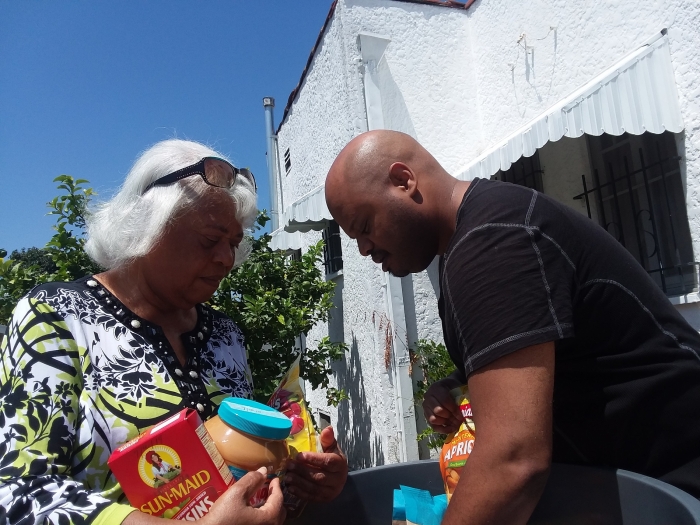
The recent Ridgecrest earthquakes, which were felt across the Southland, definitely has everyone thinking about being prepared. We see tech rising to the forefront with apps like ShakeAlert, an early earthquake warning system mobile app for Angelenos, which was recently approved by a Los Angeles City Council committee. But, an app can only warn you to get ready and take cover for a quake—are you prepared for what comes after?
My mother and I thought we were but found out we were ill-prepared for a big earthquake. Like most Angelenos, we had been lulled into a false sense of security that California had said goodbye to having a major earthquake any time soon. After the Ridgecrest quakes, we took inventory only to find our emergency food had long been expired, all our flashlights were dead, no ready emergency kit and had no plan of action should either of us be found away from home during a big one.
This prompted an immediate restocking of our emergency food supply, batteries for all our flashlights and talks about a plan if we’re not together in the midst of an earthquake. We also are in the process of creating survival backpacks, where we put essentials in backpacks such as snack foods, bottled water, under clothes, tennis shoes, etc. and keeping them in our cars in event that we are away from home.
Here is some information from the Federal Emergency Management Agency (FEMA) about being prepared for an earthquake:
*Check to make sure your electrical, gas and basic utilities are functioning properly. Seek professional help in checking these connections
*Secure major appliances like your refrigerator, water heater and all the other gas appliances. It is also suggested that if requested, get a gas shutoff valve
*Secure cabinets, shelves, large frames on walls; put heavy objects in lower places
*Breakable items such as china and glass objects should be in fastened cabinets
*Make sure your residence is anchored to the foundation
*Find safe spots within your residence like a sturdy wall or table
*Earthquake drills are necessary and should be done
According to www.ready.gov, the first step in surviving a major natural disaster is to have a plan. Some of the general plans to have for you and your family is:
*How will I receive emergency alerts and warnings?
*What is my shelter plan?
*What is my evacuation route?
*What is my family/household communication plan?
*Different ages of members within your household
*Responsibilities for assisting others
*Locations frequented
*Dietary needs
*Medical needs including prescriptions and equipment
*Disabilities or access and functional needs including devices and equipment
You have to think about the specific daily living needs and responsibilities of everyone involved. Functions such as care of children, business, pets, or specific needs like the operation of durable medical equipment should be assigned.
It’s important to get your plan on paper and discuss with your family, friends or within your circle of loved ones. The next step would be to make sure everyone is clear on the roles and parts they play within the plan. Lastly, make sure you practice your plan. Check for instructions, warnings and guidelines on mobile devices or by radio on how to proceed in the event of a disaster and follow instructions that could save the lives of you and your loved ones.
In the case of an earthquake, www.ready.gov states if an earthquake happens, protect yourself right away and remember to: Drop, Cover and Hold On. Other guidelines to follow in an earthquake include:
*If you are in a vehicle, pull over and stop. Set your parking brake.
*If you are in bed, turn face down and cover your head and neck with a pillow.
*If you are outdoors, stay outdoors away from buildings.
*Do not get in a doorway.
*Do not run outside.
A basic emergency supply kit is very important in the case of a natural disaster. In building one, here are some of the items you need to include:
*Water – one gallon of water per person per day for at least three days, for drinking and sanitation
*Food – at least a three-day supply of non-perishable food
*Battery-powered or hand crank radio and a NOAA Weather Radio with tone alert
*Flashlight
*First aid kit
*Extra batteries
*Whistle to signal for help
*Dust mask to help filter contaminated air and plastic sheeting and duct tape to shelter-in-place
*Moist towelettes, garbage bags and plastic ties for personal sanitation
*Wrench or pliers to turn off utilities
*Manual can opener for food
*Local maps
*Cell phone with chargers and a backup battery
We can’t avoid natural disasters like earthquakes, but we can survive them if we are properly prepared. I’ve reached out to my immediate family members, who are all stretched out across SoCal and started the conversation if they are prepared for a big earthquake. My mother and I are still getting things together, but we’re that much closer to being ready if things get shaky again.
For more information, please visit www.ready.gov. You can also visit EarthquakeCountry.org/step5 for tips and videos on what to do in a variety of other situations.








